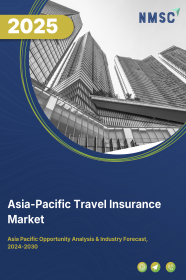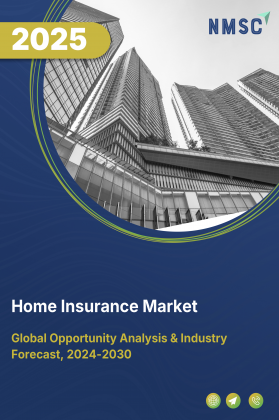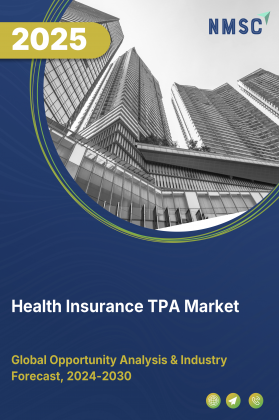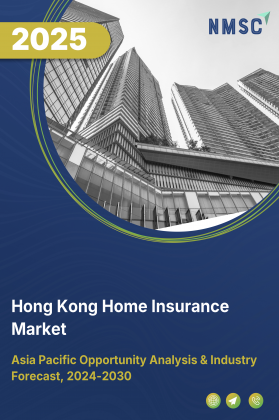
Asia-Pacific Travel Insurance Market by Age (Millennials, Generation X, and Baby Boomers), by Income Level (Low-income travelers, Middle-income travelers, and High-Income Travelers), by Coverage (Medical Coverage, Baggage and Personal Belongings Coverage, and Others), by Days of Coverage(Short-Trip Insurance, and Others), by Distributional Channel (Insurance Companies, and Others), by End User (Pilgrim Travelers, and Others) – Opportunity Analysis and Industry Forecast, 2024–2030
Industry: BFSI | Publish Date: 04-Nov-2025 | No of Pages: 190 | No. of Tables: 199 | No. of Figures: 132 | Format: PDF | Report Code : BF1977
Market Overview
The Asia Pacific Travel Insurance Market size was valued at USD 5.49 billion in 2023 and is predicted to reach USD 23.95 billion by 2030, with a CAGR of 22.0 % from 2024 to 2030. Travel insurance serves as a specialized insurance product aimed at providing protection and coverage to travelers against a wide array of potential risks and unforeseen circumstances that may occur before or during their journeys. It plays a vital role in mitigating the financial impact of various travel-related emergencies, disruptions, and inconveniences, thereby ensuring that travelers can embark on their trips with confidence.
One of its key advantages is its ability to offer financial reimbursement and assistance in the event of trip cancellations or interruptions. This coverage extends to unforeseen circumstances such as illness, injury, or emergencies, allowing travelers to recover non-refundable expenses incurred for flights, accommodations, and other pre-paid arrangements.
The Growing Number of Online Platforms for Travel Insurance Fuels Market Growth in Asia-pacific
The rapid expansion of online platforms and Insurtech solutions is reshaping the Asia-Pacific travel insurance landscape by improving accessibility, convenience, and transparency. These digital platforms allow travelers across countries like China, Australia, India, and Indonesia to compare multiple policy options based on price, coverage features, and customer reviews. The ease of purchasing insurance online—combined with mobile-first interfaces and instant policy issuance—has reduced traditional barriers such as paperwork and physical visits. As tech-savvy consumers dominate the region, this digital shift is accelerating market penetration, fostering greater competition among providers, and driving demand through enhanced user experience and real-time services.
Increased Marketing and Consumer Awareness Drive Demand in Asia-pacific
Aggressive marketing campaigns, educational initiatives, and partnerships with travel ecosystem players have significantly raised awareness about the importance of travel insurance across Asia-Pacific. Insurance providers are leveraging digital channels, social media, influencer marketing, and airline collaborations to highlight coverage benefits such as medical emergency protection, trip interruption compensation, and baggage loss support. Increased visibility, combined with post-pandemic risk awareness, has shifted consumer perception—transforming insurance from a “nice-to-have” into an essential travel companion. Furthermore, bundled insurance offerings with flight or hotel bookings and mandatory insurance requirements for select destinations are strengthening adoption across the region.
Perceived High Costs of Travel Insurance Limit Market Expansion in Asia-pacific
Despite rising awareness, many travelers in Asia-Pacific still view travel insurance as a non-essential expense—especially for short-haul or low-budget trips. The perception of high premiums, coupled with limited understanding of policy value or benefits, discourages uptake, particularly among younger or first-time travelers. Additionally, complex policy terms, hidden exclusions, and varying price points create confusion and distrust. To address this restraint, insurers must simplify product offerings, introduce micro or pay-per-trip models, and improve cost-benefit communication. Customizable pricing structures that cater to different traveler segments—such as backpackers, students, or elderly tourists—could also enhance affordability and market participation.
Blockchain Technology Offers Strong Growth Potential for Asia-pacific’s Travel Insurance Sector
Blockchain technology holds transformative potential for the Asia-Pacific travel insurance industry, offering secure, transparent, and efficient solutions to long-standing operational inefficiencies. The use of blockchain enables real-time verification, tamper-proof record-keeping, and faster settlements via smart contracts. This can drastically reduce claims processing time and eliminate fraudulent activity—an ongoing concern in high-volume travel regions. Moreover, blockchain allows seamless data sharing between insurers, travel agencies, airports, and healthcare providers, enhancing customer service and coordination. As travel insurance moves toward greater personalization and automation, blockchain will play a vital role in enabling parametric products and low-cost digital micro-policies tailored for Asia-Pacific’s diverse traveler base.
China Holds the Dominant Share in Asia Pacific Market
China holds the dominant share in the Asia Pacific travel insurance market due to several key factors. Firstly, the sheer size of China's population and its growing middle class have led to an increase in outbound travelers, creating a significant demand for travel insurance. Additionally, the Chinese government has been promoting outbound tourism, leading to more people traveling abroad and consequently purchasing travel insurance for protection. Moreover, the rise of online platforms and digitalization has made it easier for Chinese consumers to access and purchase travel insurance policies, further fueling the market's growth.
Lastly, the competitive landscape in China's insurance industry has led to innovative product offerings and aggressive marketing strategies, attracting more consumers to opt for travel insurance. Overall, these factors contribute to China's dominance in the Asia Pacific travel insurance market.
South Korea is Expected to Show Steady Growth in the Asia Pacific Market
South Korea is expected to show steady growth in the Asia Pacific travel insurance market due to several reasons. Firstly, South Korea has a robust economy with a growing middle class and increasing disposable income, leading to more people traveling both domestically and internationally. This rising trend in travel creates a greater awareness and demand for travel insurance among South Korean travelers who seek protection against unexpected events during their trips.
Additionally, the South Korean government's efforts to promote tourism and encourage outbound travel further contribute to the expansion of the travel insurance market.
Moreover, the presence of well-established insurance companies and their innovative product offerings tailored to meet the specific needs of travelers enhances the accessibility and attractiveness of travel insurance in South Korea. Overall, these factors combine to support the expected steady growth of the travel insurance market in South Korea within the Asia Pacific region.
Competitive Landscape
Several market players operating in the Asia-Pacific travel insurance market include Allianz SE, AXA S.A., Zurich Insurance Group AG, American International Group, Inc. (AIG), Chubb Limited, Assicurazioni Generali S.p.A., Tokio Marine Holdings, Inc., Sompo Holdings, Inc., QBE Insurance Group Limited, FWD Group Limited, Prudential Hong Kong Limited, Aviva plc, HDFC ERGO General Insurance Company Limited, ICICI Lombard General Insurance Company Limited, Singapore Life Limited, Tune Protect Group Berhad, Pacific Cross Insurance, Inc., Southern Cross Travel Insurance Australia Pty Ltd, and Others.
Asia-Pacific Travel Insurance Market Key Segments
By Age
-
Millennials
-
Generation X
-
Baby Boomers
By Income Level
-
Low-income Travelers
-
Middle-income Travelers
-
High-income Travelers
By Coverage
-
Medical Coverage
-
Trip Cancellation Coverage
-
Baggage and Personal Belongings Coverage
-
Accidental Death and Dismemberment (AD&D) Coverage
By Days of Coverage
-
Short-Trip Insurance
-
Standard Trip Insurance
-
Extended Trip Insurance
-
Multi-Trip Insurance
By Distributional Channel
-
Insurance Companies
-
Banks
-
Airlines
-
Online Platforms
-
Insurance Aggregators and Comparison Websites
-
Travel Agents and Tour Operators
By End User
-
Pilgrim Travelers
-
Education Travelers
-
Business Travelers
-
Family Travelers
By Country
-
China
-
India
-
Japan
-
South Korea
-
Taiwan
-
Indonesia
-
Vietnam
-
Australia
-
Philippines
-
Malaysia
-
rest of APAC
Key Players
-
Allianz SE
-
AXA S.A.
-
Zurich Insurance Group AG
-
American International Group, Inc. (AIG)
-
Chubb Limited
-
Assicurazioni Generali S.p.A.
-
Tokio Marine Holdings, Inc.
-
Sompo Holdings, Inc.
-
QBE Insurance Group Limited
-
FWD Group Limited
-
Prudential Hong Kong Limited
-
Aviva plc
-
HDFC ERGO General Insurance Company Limited
-
ICICI Lombard General Insurance Company Limited
-
Singapore Life Limited
-
Tune Protect Group Berhad
-
Pacific Cross Insurance, Inc.
-
Southern Cross Travel Insurance Australia Pty Ltd
Report Scope and Segmentation
|
Parameters |
Details |
|
Market Size in 2023 |
USD 5.49 Billion |
|
Revenue Forecast in 2030 |
USD 23.95 Billion |
|
Growth Rate |
CAGR of 22.0 % from 2024 to 2030 |
|
Analysis Period |
2023–2030 |
|
Base Year Considered |
2023 |
|
Forecast Period |
2024–2030 |
|
Market Size Estimation |
Billion (USD) |
|
Growth Factors |
|
|
Countries Covered |
12 |
|
Companies Profiled |
18 |
|
Market Share |
Available for 10 companies |
|
Customization Scope |
Free customization (equivalent up to 80 working hours of analysts) after purchase. Addition or alteration to region, regional, and segment scope. |
|
Pricing and Purchase Options |
Avail customized purchase options to meet your exact research needs. |

















 Speak to Our Analyst
Speak to Our Analyst

























